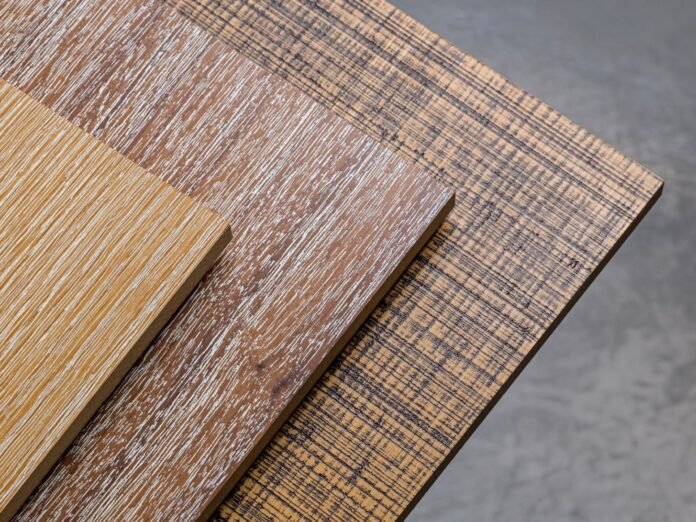Did you know that the furniture you purchase for your home in Vallarta could harm your health and the environment? Behind the glossy finishes and lower prices of some furniture in retail stores lie a plethora of hidden dangers. Investing in better-quality materials is paramount for our well-being and the planet’s health.
Most of the furniture available in department and big box stores is manufactured in China,
Taiwan, and India and exported to Mexico. To keep retail costs as low as possible, offshore
manufacturers often use low-cost materials that could be hazardous to our health, including formaldehyde, flame retardants, volatile organic compounds, and more.
Formaldehyde is a colorless, pungent gas commonly found in many low-grade composite wood products like particleboard, plywood, and medium-density fiberboard (MDF). These materials are prevalent in furniture such as cabinets, shelves, and upholstered pieces. Formaldehyde exposure can lead to respiratory issues and skin irritation and potentially increase the risk of certain types of cancer with prolonged contact.
Flame retardants like Polybrominated Diphenyl Ethers (PBDEs) are often added to furniture
foam and upholstery to meet fire safety regulations. Lower-cost sofas, mattresses, and
upholstered chairs frequently contain these chemicals. PBDEs have been linked to
developmental delays, reproductive problems, and thyroid disruption, particularly concerning for vulnerable populations such as pregnant women and children.
Volatile Organic Compounds (VOCs) are emitted as gases from various household products,
including paints, varnishes, and furniture finishes. Furniture made from particleboard, plywood, and MDF often contains VOCs, as do some paints and finishes applied as furniture surfaces. Prolonged exposure to VOCs can lead to headaches, dizziness, and respiratory irritation. Additionally, VOCs contribute to indoor air pollution and environmental degradation.

Phthalates are plasticizers used in furniture coatings and upholstery and can be found in vinyl flooring, synthetic leather furniture, and some textiles. Exposure to phthalates has
been associated with hormone disruption, reproductive issues, and adverse developmental
effects, particularly concerning for children and pregnant women.
Heavy metals like lead and chromium are often present in paints and surface coatings applied to furniture. Lead can be found in antique or older painted furniture, while chromium may be in metal frames. Both substances are toxic to humans and the environment, with lead exposure posing serious neurological risks, especially to children.
Formaldehyde-based adhesives are commonly used in the manufacturing process of lower-grade composite wood products, while ammonia is found in some upholstery materials. Exposure to these chemicals can lead to respiratory issues, skin irritation, and poor indoor air quality, affecting both consumers and workers in the furniture industry.
Polyvinyl chloride (PVC) is used in furniture upholstery, while chlorofluorocarbons (CFCs) are used as blowing agents in foam insulation and cushions. PVCs and CFCs have been associated with environmental pollution and health concerns, including ozone depletion and respiratory issues.
Despite the initial appeal of furniture with a lower price tag, the consequences of overlooking the materials used in its production can be dire. Not only do these products pose significant health risks to consumers, but they also contribute to environmental degradation throughout their lifecycle. From the extraction of raw materials to manufacturing processes and eventual disposal, the environmental footprint of this type of lower-priced furniture is substantial.
So, why is it better to invest in furniture made with quality materials, and why is it essential to know what furniture is made with?

Firstly, purchasing furniture made with the right materials ensures the safety and well-being of your household. High-quality materials are less likely to contain harmful chemicals and toxins, providing a healthier indoor environment for you and your loved ones.
Secondly, opting for durable, well-made furniture reduces the need for frequent replacements, ultimately saving money and resources in the long run. Investing in furniture that stands the test of time can minimize waste and lessen your environmental impact.
Moreover, supporting retailers prioritizing transparency and sustainability in their product offerings can help drive positive change within the furniture industry. It’s not just about what furniture looks like or its price; it’s about the materials it’s made with and its impact on human health and the planet.
Need furniture? Whether you need a new comfy sectional or couch or a whole condo of
furniture, we help you easily furnish your home in Vallarta. Visit us at our Puerto Vallarta store at 363A Constitucion or Bucerias store at Heroes de Nacozari 126. If you are not currently in Mexico, email us at furniture@solutionsmexico.com or text us on WhatsApp at +52 322 136 5156. And remember, you can always reach us through our website: www.solutionsmexico.com.


